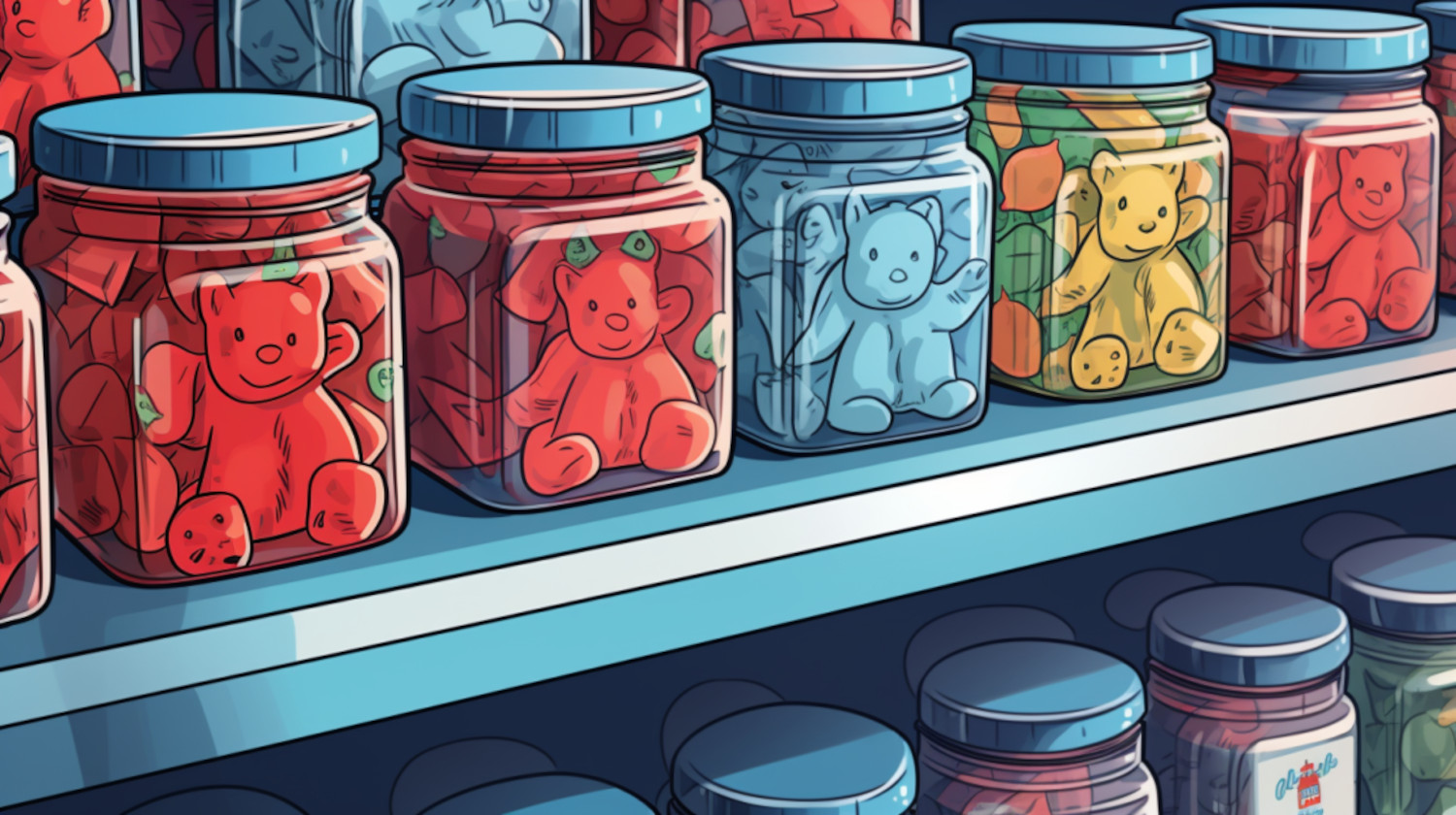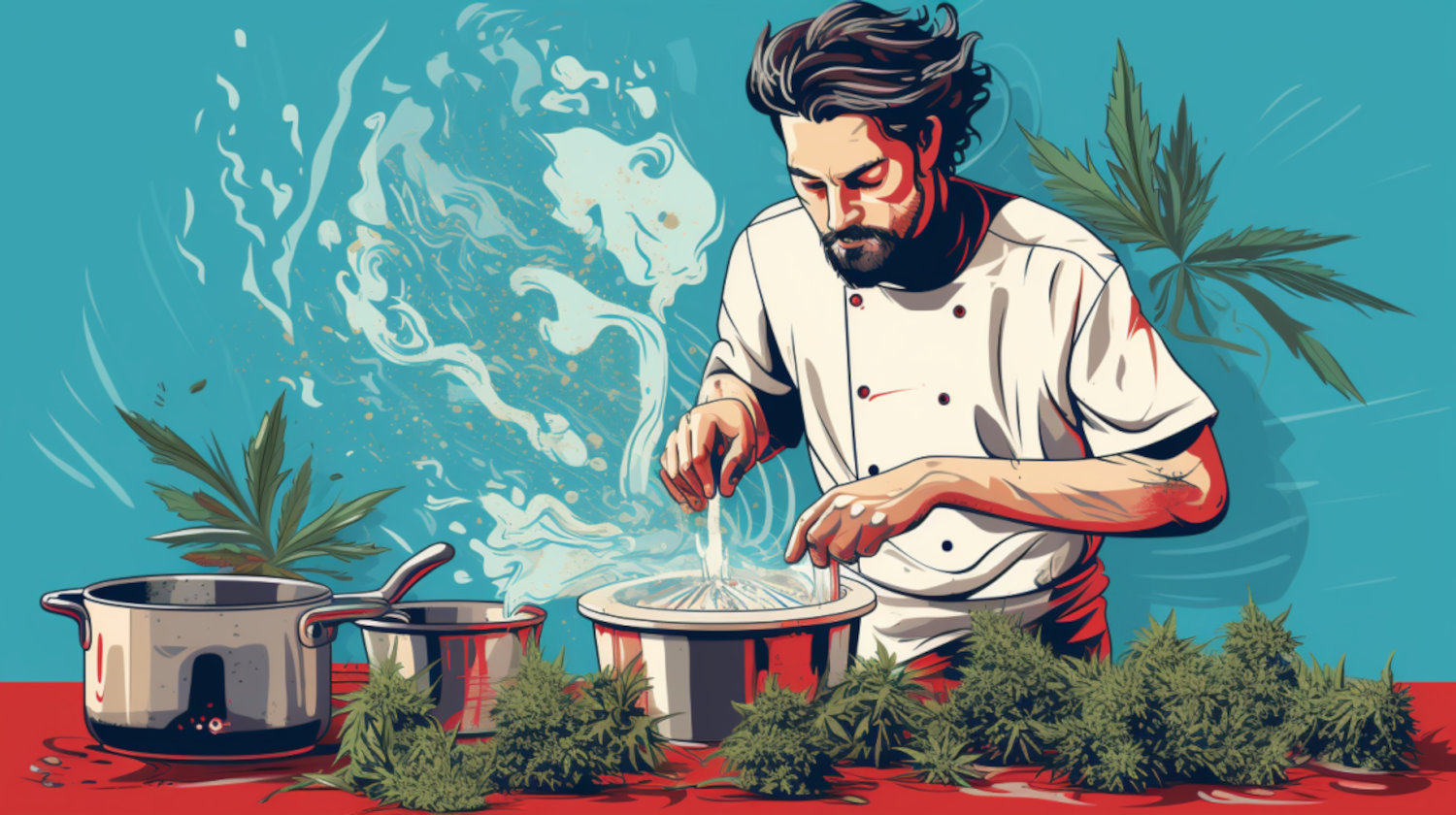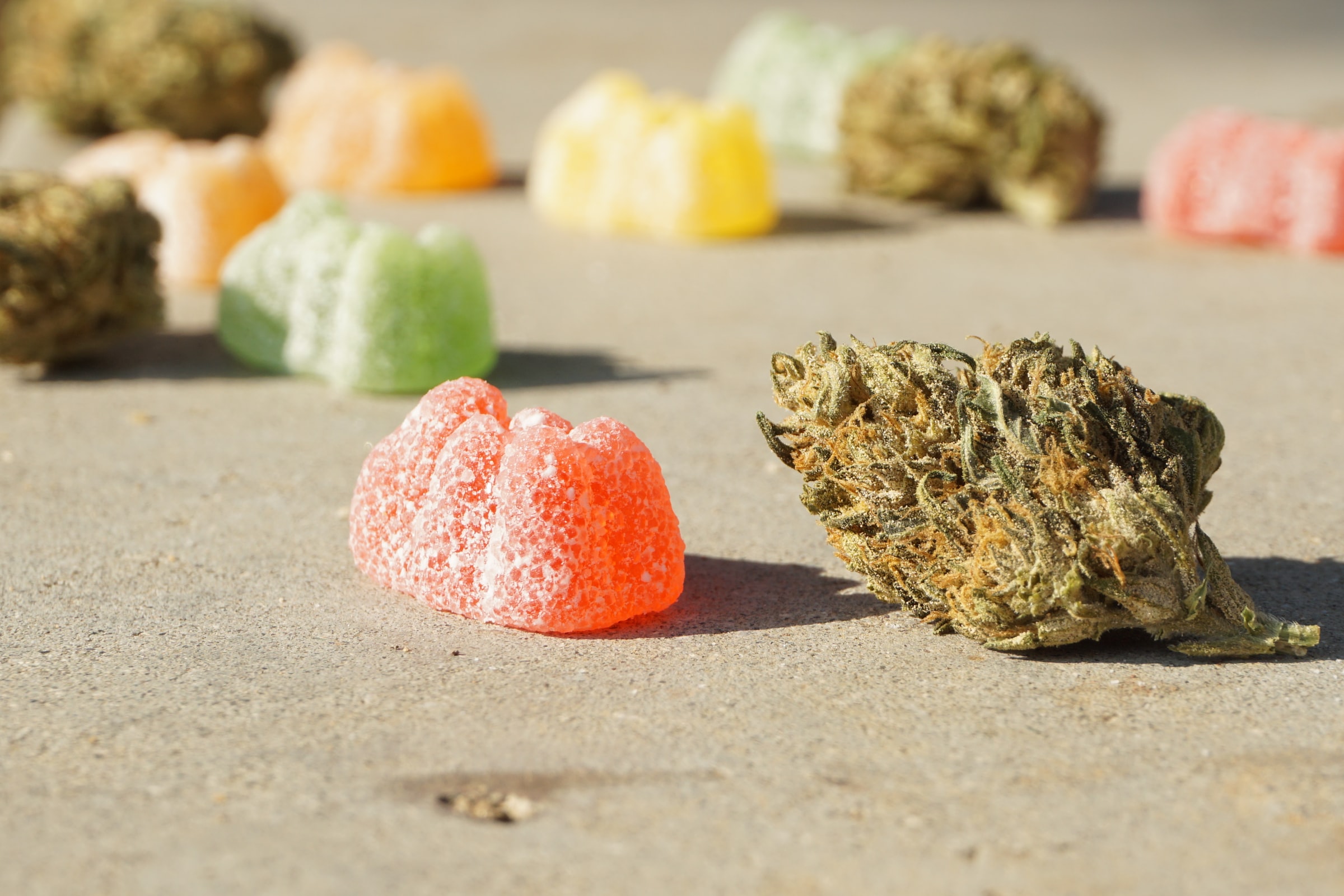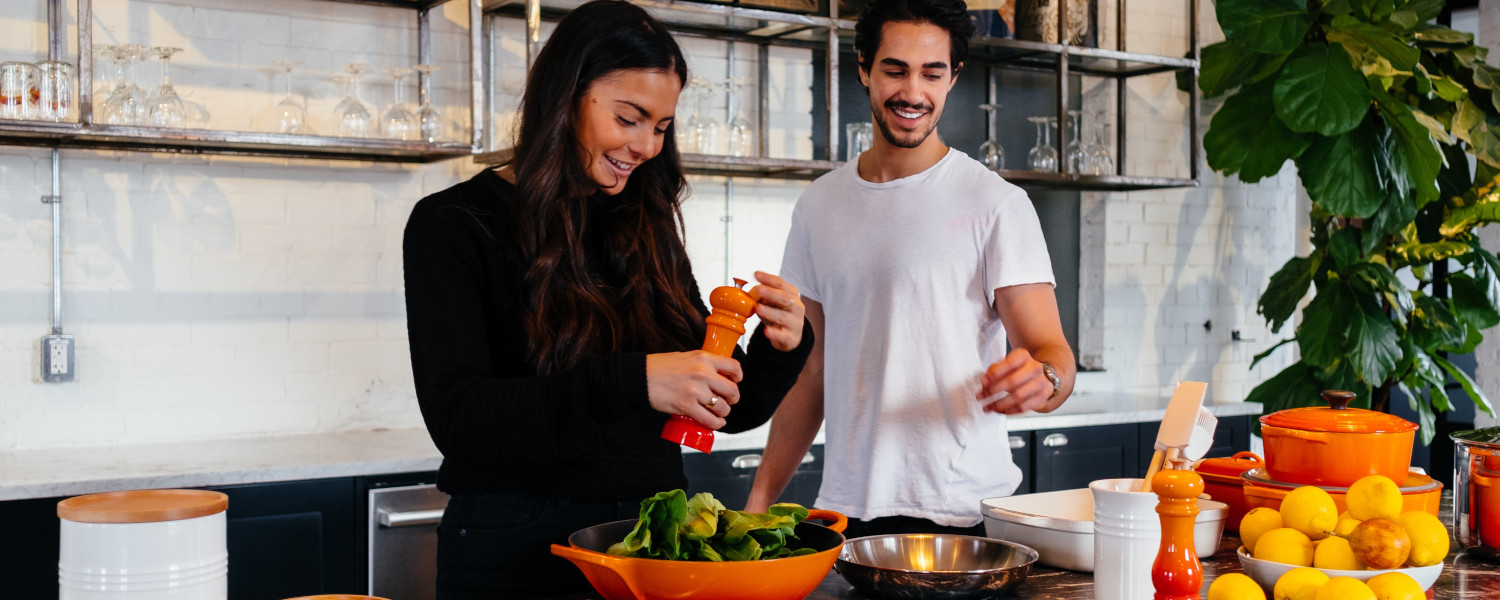In This Article
- The Benefits of Making Weed Gummies
- How To Decarboxylate Cannabis For Edibles
- How to Make Weed Gummies: Making Your Own Cannabis Oil
- Ingredients
- Recipe (Step-by-Step)
- How To Make Weed Gummy Bears
- Ingredients
- Other Materials
- Recipe (Step-by-Step)
- How To Make Infused Sugar to Coat Gummies
- Ingredients
- Other Materials
- Method
- How Many Homemade Cannabis Gummies Should You Eat?
- Storage Instructions
- Conclusion
Weed gummies are one of the most popular ways to consume cannabis. They are chewy treats infused with different cannabis oils that deliver little pockets full of potent flavor. From the variety of flavors to the range of dosages and price points, they offer consumers diverse options to fit their individual needs.
They’re a discreet way to get the effects you need and one look at a dispensary’s shelves reveals that they’ve surpassed traditional cannabis chocolate as the go-to edible of choice.
And for consumers who want greater control over their dosage and ingredients, there’s the option to make weed gummies at home.
In this article, we’ll discuss how to make cannabis gummies, share consumer tips, and explore the best way to store them.
The Benefits of Making Weed Gummies
Gummies purchased in dispensaries often have dosage limits. For users with higher tolerance levels, this can be a frustrating and expensive experience, so at-home edibles are often their solution.
It’s important to note that consuming weed gummies can result in a different experience than when cannabis is smoked. While they can have a longer onset time, taking anywhere from 30 minutes to 2 hours to take effect, there are many benefits that have led countless smokers to transition to these chewy little edibles.
- Potent effects – How the body metabolizes gummies can intensify the intoxicating experience for many consumers. Gummies are processed in the liver, and the stomach metabolizes them into a compound called 11-hydroxy-THC, a cannabinoid that’s known for its greater potency.
- A healthier option – This is especially true for those with lung and respiratory issues. Making your own edibles at home also allows you to stick to any dietary restrictions.
- Discreet – Some people don’t want (or can’t have) clouds of smoke that linger with pungent odors. Weed gummies can be placed in a small bag or jar, kept away, and consumed in a moment.
- Long-lasting effects – The effects of gummies can last for 4-6 hours on average (and sometimes longer).
- Precisely dosed – Gummies can be a great way to get just the right amount of cannabinoids to fit your needs. And making them at home allows you to tailor the experience even further with larger or smaller doses.
- Variety of flavors – Since they are a common product and easily made, the flavor options are almost endless.
How To Decarboxylate Cannabis For Edibles
Decarboxylation, or decarbing, is the process of heating up and “activating” your cannabis. When you decarb cannabis, you’re converting the cannabinoids naturally found in the cannabis plant – THCA and CBDA – into THC and CBD.
If you skip the decarb step before making your gummies, you may not get any of the traditional intoxicating effects from your homemade edibles. There are benefits to using raw cannabis in food recipes, but it is more of a “superfood” rich in antioxidants.
There are many methods to decarbing your cannabis, but the most common approach uses the oven and is as follows:
- Gather your materials. You’ll need a baking sheet, foil or parchment paper, a spoon or spatula, and your choice of cannabis flower (how much you use will determine the potency of the final product).
- Preheat the oven to about 250°F
- Spread the flower out evenly on a baking sheet.
- Place the baking sheet into the oven for 25 to 30 minutes.
- Halfway through the baking time, use the spoon or spatula to stir the flower.
- Remove the baking sheet from the oven and let cool.
- Store any flower you don't use (and any gummies you don’t eat) in an air-tight jar for later.
How to Make Weed Gummies: Making Your Own Cannabis Oil
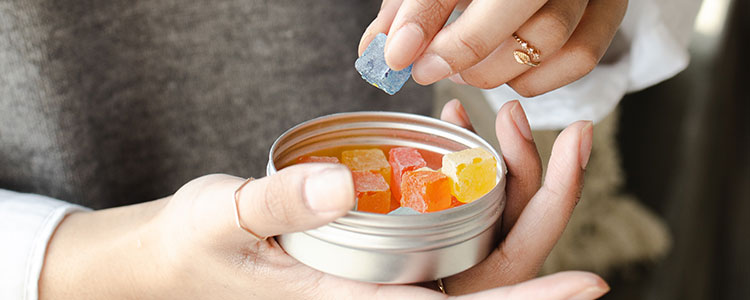
Making your own infused gummies at home requires cannabis cooking oil. Thankfully, you can do this easily at home. This recipe from Insider goes into further detail on which oil to choose and how the process goes.
Ingredients
- Decarbed flower
- 1 cup of cooking oil (your choice)
- Stove
- A double-boiler or a stovetop pot and heat-safe bowl
- Cheesecloth or strainer
- Thermometer
- Air tight jar
Recipe (Step-by-Step)
- Heat the double broiler to low.
- Once the water (in the bottom component) is simmering, add oil to the top portion.
- Bring oil to a boil – about 160 to 180 degrees Fahrenheit
- Add decarbed flower to the oil.
- Stir occasionally over the course of two to four hours, adjusting heat to maintain an even temperature throughout the process.
- Remove from heat.
- Strain the flower from the oil with the cheesecloth into a jar. You can repeat this process till all the flower material is removed.
- Close the jar. Once cooled, you can store your cannabis cooking oil like you would a traditional cooking oil (don’t forget to clearly label your infused oil).
Now that you have infused oil, it’s time to find the right recipe.
How To Make Weed Gummy Bears
The following recipe from A Pot for Pot offers a quick, easy-to-follow process.
Ingredients
- ½ cup of your cannabis oil
- 1 packet of flavored gelatin or Jello
- 2 tablespoons unflavored gelatin
- ½ cup of cold water
- ½ teaspoon of sunflower or soy lecithin oil
Other Materials
- Stove
- Saucepan
- Eyedropper
- Molds
- Whisk or spoon
Recipe (Step-by-Step)
- Combine water and cannabis oil with the sunflower oil in a saucepan.
- Place the pan on the stove over low heat.
- Add the gelatin and whisk for 15 minutes or until the gelatin dissolves. Never allow the mixture to boil.
- Quickly take the mixture, and place it into the molds.
- Once the molds are filled, place them into a freezer til they harden.
- Once the gummies reach your desired texture, you can remove them from the freezer.
- Remove the gummies from the molds, and place them into an air-tight storage container.
How To Make Infused Sugar to Coat Gummies
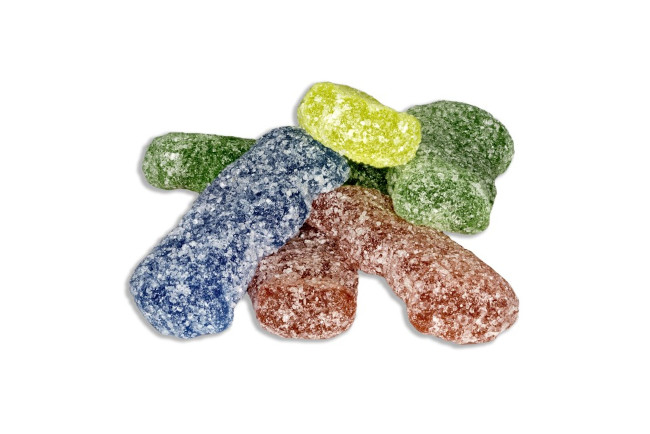
Another way to make weed gummies is to use non-infused gummies – store-bought or homemade – and coat them with cannabis-infused sugar.
This cannabis sugar recipe from Emily Kyle is super simple to follow but may take an extra day’s prep.
Ingredients
- White granulated sugar
- Cannabis tincture
Other Materials
- Oven
- Baking dish
- Spatula
- Cheesecloth
- Glass Jar
Method
- Place sugar in the baking dish.
- Pour the tincture over the sugar.
- Use the spatula to mix until the sugar is evenly coated.
- Cover the baking dish with the cheesecloth.
- Let this mixture dry until all the liquid has evaporated. It may take up to 3 days.
- Place and store sugar in the glass jar.
All of these recipes leave room for creativity with flavors and ways to adjust the potency to your liking.
How Many Homemade Cannabis Gummies Should You Eat?
Traditionally, it was hard to measure precise dosages for homemade edibles. There are ways to get a rough estimate if you know the potency of the dry flower material you are using, but the surest method is to use a cannabis edible calculator.
To use an edible calculator, you’ll need to know…
- The weight of the cannabis flower (in grams)
- The percentage of THC in the flower
- The type of oil used
- The amount of oil used
Cannabis experts usually recommend a beginner dose of anywhere from 2.5 to 10 milligrams of THC, depending on the individual and desired effects. It’s also important to remember the onset time for an edible can be anywhere from 30 minutes to 2 hours. The effects can also last for more than a few hours, and the intensity of those effects may change with time.
If your calculated strength per serving is higher, you may want to consider cutting your serving sizes.
Storage Instructions
Since edibles are food items, you’ll want to make sure you store them properly to preserve their freshness and prevent mold. While they aren’t likely to lose their potency before you can enjoy them, homemade gummies won’t have added preservatives to keep them fresh longer. To best store your at-home gummies, you’ll need the following:
- Airtight container
- Parchment paper
- A cool, dark place
Once you’re ready to store your gummies, it’s best to wrap them individually in parchment paper so they won’t stick to each other and cause confusion about the size of a dose. Once the gummies are wrapped, place them in an airtight container; it can be glass or Tupperware, just make sure it’s sealed tight. Now place the container in a cool, dark space (like the fridge).
Make sure the container is clearly labeled, especially if you share the space with children, roommates, or anyone else who may find them. If you have children, it’s best to store your gummies in an out-of-reach place (preferably locked).
Labeling your gummies can also help you get the most out of your homemade goodies (and make them again, if you’re happy with their effects and flavor). Use some tape or a sticky note and a marker to list important information, such as:
- The date they were made
- The kind of flower used
- The potency of the flower
- The dosage of each piece
- The flavor of the gummies
- A friendly “caution” that these are infused with weed.
Conclusion
The process of making weed gummies can be intricate and fun, whether baking on your own or inviting friends to join you.
Beyond the joy of having your own homemade edibles, making weed gummies is a great way to learn more about the cannabis cooking process and recommended dosage. By selecting your favorite strain, you can ensure you get the desired effects. And because oils and sugars can be made in large batches and stored for future use, making your own gummies can save money over shopping at the dispensary.
Finally, making gummies is an efficient way to use weed that you don’t plan on smoking or that is getting old.
The information in this article and any included images or charts are for educational purposes only. This information is neither a substitute for, nor does it replace, professional legal advice or medical advice, diagnosis, or treatment. If you have any concerns or questions about laws, regulations, or your health, you should always consult with an attorney, physician or other licensed professional.

